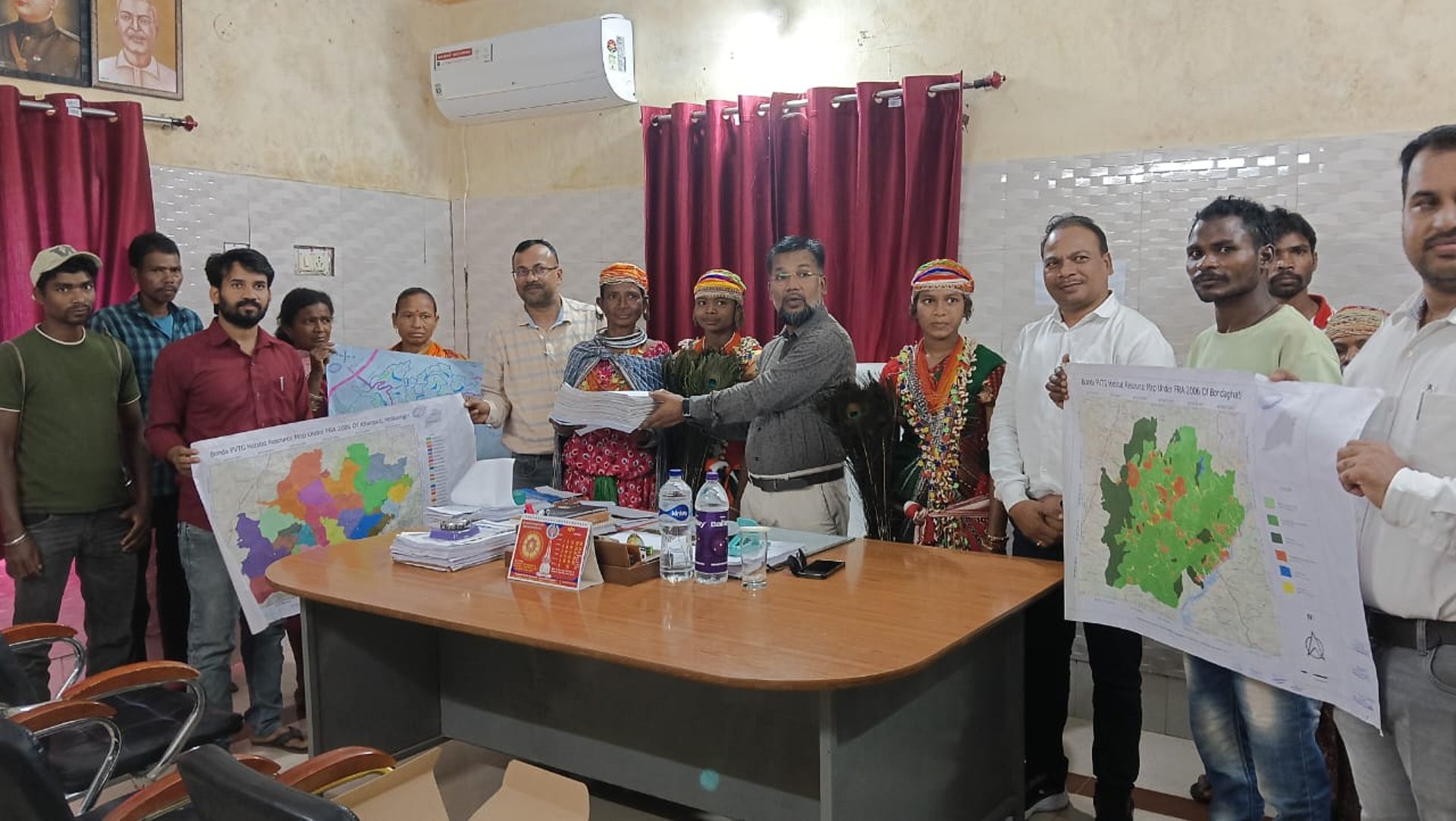
05.01.25
Patta Pandum Celebrations in Kalimela Cluster, Malkangiri
Between 26 and 31 December 2024, the Patta Pandum celebrations expanded to seven additional villages and the Bonda Particularly Vulnerable Tribal Group (PVTG) of the Bonda Ghati. Each village embraced its traditional practices, organising community feasts, placing posters at traditional boundaries, and conducting awareness sessions. These events highlighted the authority and responsibility of Gram Sabhas (GSs) in sustainable forest management.


The villages of the Kalimela Cluster in Malkangiri district, Odisha, have been abuzz with celebrations after securing their Community Forest Resource Rights (CFRR) titles. These were granted under the Scheduled Tribes and Other Traditional Forest Dwellers (Recognition of Forest Rights) Act, 2006—commonly known as the Forest Rights Act (FRA).
Known locally as Patta Pandum (or Patta Parab), these festivals mark the culmination of years of struggle for legal recognition of community ownership of forests and forest resources.
Significance of the Celebrations
The Patta Pandum festivals not only celebrate the recognition of CFRR titles but also serve as platforms for spreading awareness about the responsibilities tied to these rights. By placing posters and conducting awareness sessions, the villagers emphasised their collective commitment to forest stewardship, biodiversity protection, and community governance.
The success of the Kalimela Cluster showcases the power of collective action and traditional knowledge in securing legal rights. This achievement reflects the resilience and determination of forest-dependent communities in protecting their forests and heritage for future generations.
Testament to Community Strength
Inspiring Change Across the Region
The celebrations are expected to inspire other villages to pursue their rightful CFRR claims while encouraging collaborative efforts for forest conservation, cultural preservation, and sustainable resource management.
Patta Pandum has become more than just a local celebration—it symbolises a movement towards sustainable forest management, cultural pride, and grassroots empowerment across the region.
